Trees Birds Mammals Fish Amphibians Reptiles
Wild Algarve
Bookshop
Leucocoprinus birnbaumii (Corda) Singer - Plant Pot Dapperling
Phylum: Basidiomycota - Class: Agaricomycetes - Order: Agaricales - Family: Agaricaceae
Distribution - Taxonomic History - Etymology - Identification - Toxicity - Reference Sources
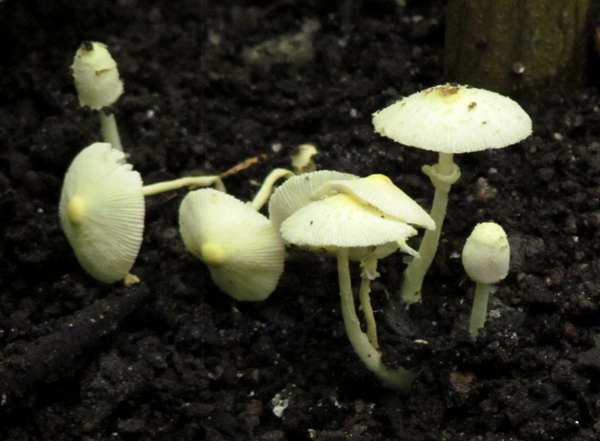
This pretty is a tropical/subtropical species, and its occurrence in temperate regions such as Britain and Ireland is due to the importing of exotic plants from regions where this species is native. It is very unusual to come across the Plant Pot Dapperling anywhere in Britain and Ireland other than indoors or in a heated greenhouse.
Distribution
Uncommon but widespread in hothouses throughout Britain, Ireland and mainland Europe.
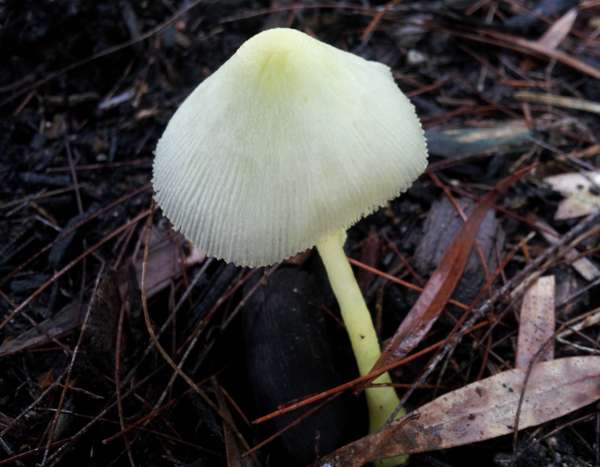
Leucocoprinus birnbaumii is encountered in many other parts of the world including Australia and North America, where it is almost invariably seen in hothouses or in the pots of exotic house plants that require a warm, moist environment.
Above: picture by kind permission of Martin Grocott.
Taxonomic history
This attractive little mushroom was first described in 1785 by Yorkshire mycologist James Bolton, who named it Agaricus luteus - invalidly, as that epithet had already been used. (It was Bolton who between 1788 and 1790 produced the the first English-language work devoted to fungi, An History of Fungusses growing about Halifax.)
In 1839 the Czech mycologist August Corda described the same species, based on specimens which had been found in a greenhouse by a garden inspector named Birnbaum - hence the specific epithet birnbaumii.
It was the German-born mycologist Rolf Singer who, in 1961, transferred this species to the genus Leucocoprinus, thus establishing its scientific name as Leucocoprinus birnbaumii.
Synonyms of Leucocoprinus birnbaumii include Agaricus luteus Bolton, Agaricus luteus With., Agaricus birnbaumii Corda, Lepiota lutea (Bolton) Godfrin, Lepiota aurea Massee, Lepiota pseudolicmophora Rea, and Leucocoprinus luteus (Bolton) Locq.
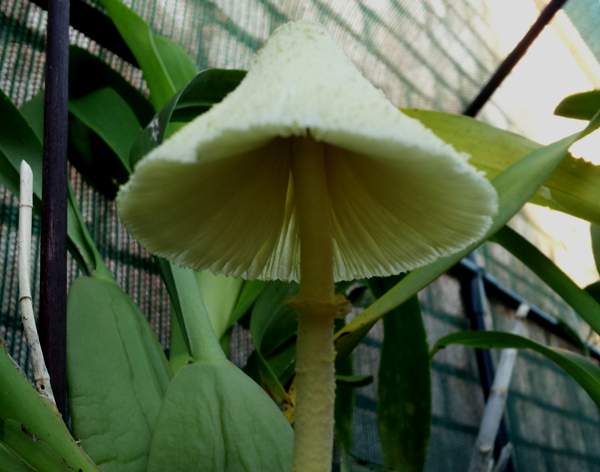
Etymology
Leucocoprinus is derived from the Greek Leucos meaning white and Coprinus, the name of a genus that until recently contained all of the mushrooms commonly referred to as inkcaps. (Following recent research based on molecular analysis, the majority of the inkcaps have been evicted from the genus Coprinus, which is now recognised as a member of the family Agaricaceae; most of the inkcaps are now included in the family Psathyrellaceae.) Certainly, apart from its stem ring the Plant Pot Dapperling looks very much like a yellow Parasola plicatilis, commonly referred to as the Pleated Inkcap.
The specific epithet birnbaumii honours a Czech gardener who found this mushroom growing in a hothouse in 1839.
The picture of Plant Pot Dapperlings shown above was kindly contributed by Eric Nenneman.
Toxicity
Leucocoprinus birnbaumii is known to be a toxic toadstool, and if eaten it can cause a very unpleasant stomach upset. Fortunately the Plant Pot Dapperling occurs in an unusual habitat, is insubstantial and is sufficiently rare for the risk of fungi foragers accidentally gathering this mushroom as part of a meal to be minimal.
Identification guide
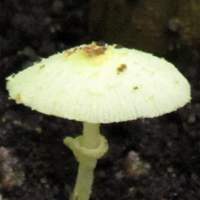 |
Cap
Initially conical becoming convex and sometimes expanding to become almost flat; often smooth and silky but dotted with tiny flakes or scales; bright yellow, gradually becoming ochre. Cap diameter at maturity ranges from 2 to 6cm.
Gills
The free, crowded gills are yellow.
Stem
Yellow, smooth, with an evanescent fragile ring; stems are 3 to 6cm long and 0.8 to 2cm in diameter. |
| |
Spores
Ellipsoidal, smooth, thick-walled; 8-12 x 5-9μm; dextrinoid.
Spore print
White. |
Odour/taste |
Not significant. |
Habitat & Ecological role |
Saprobic, occurring singly or in small groups on potting compost and other rich soils in warm moist places. |
Season |
June to October in unheated greenhouses in Britain, but in heated greenhouses these fungi could perhaps appear at any time of the year. |
Similar species |
Bolbitius titubans is a grassland species of similar size and with a yellow cap, but its yellow gills turn cinnamon when the spores mature, and its slender stem has no ring. |
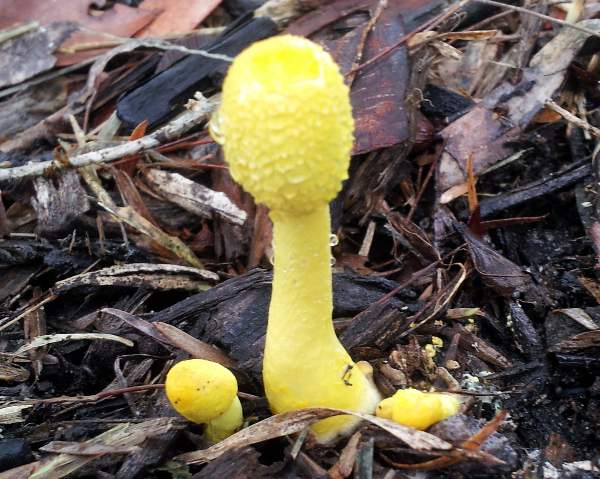
Reference Sources
Fascinated by Fungi, 2nd Edition, Pat O'Reilly 2016, reprinted by Coch-y-bonddu Books in 2022.
Dictionary of the Fungi; Paul M. Kirk, Paul F. Cannon, David W. Minter and J. A. Stalpers; CABI, 2008
Taxonomic history and synonym information on these pages is drawn from many sources but in particular from the British Mycological Society's GB Checklist of Fungi.
Acknowledgements
This page includes pictures kindly contributed by Patrea Andersen.
Top of page...
Fascinated by Fungi. Back by popular demand, Pat O'Reilly's best-selling 450-page hardback book is available now. The latest second edition was republished with a sparkling new cover design in September 2022 by Coch-y-Bonddu Books. Full details and copies are available from the publisher's online bookshop...